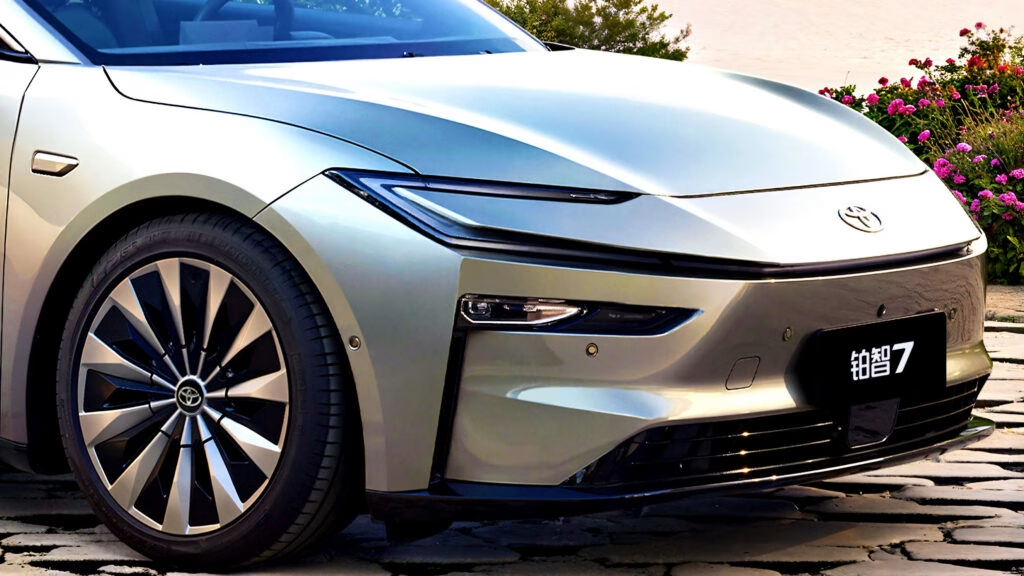How Does the Toyota bZ7 Stack Up Against the Tesla Model S and BYD Han L?
If you’re curious about how Toyota’s new bZ7 fits into the electric sedan landscape, here’s the scoop: it’s sized right alongside heavyweights like the Tesla Model S and BYD Han L. At 5,130 mm long and 1,965 mm wide, the bZ7 is a full-size flagship with a presence that’s hard to ignore. Its proportions put it squarely in the crosshairs of not just Tesla and BYD, but also the BMW i5—so it’s not shying away from a fight.
What’s interesting is Toyota’s approach. While the bZ7 isn’t chasing after wild, futuristic styling, its low-slung silhouette, lobster claw headlights, and sculpted bodywork give it a modern, understated confidence. The flush door handles and interconnected taillights add a premium touch, making it feel more refined than some of Toyota’s earlier EV efforts (looking at you, bZ4X).
What’s Under the Hood: Powertrain and Battery Tech
Let’s talk numbers. The bZ7 comes equipped with a lithium-iron phosphate battery from CALB-Tech, powering a single electric motor rated at 278 horsepower. That’s a solid figure for a rear-wheel-drive sedan in this class, though it’s not aiming to out-muscle the dual-motor Teslas. Instead, Toyota seems to be focusing on efficiency, reliability, and day-to-day usability—hallmarks of the brand.
The battery chemistry is worth noting. Lithium-iron phosphate (LFP) cells are known for their durability and safety, and they’re increasingly popular in China’s EV market. While Toyota hasn’t released official range figures yet, LFP batteries typically offer excellent longevity, which should translate to lower long-term ownership costs. Given the bZ7’s size and the competitive landscape, expect a range in the 350-450 km (220-280 mile) ballpark—right where most buyers want it.
How Does the bZ7’s Tech Ecosystem Set It Apart?
Here’s where things get really interesting. Toyota has teamed up with tech giants Huawei and Xiaomi to power the bZ7’s infotainment and smart features. The car’s motor, MCU, and inverter are all integrated into a single Huawei-sourced unit, streamlining performance and potentially boosting reliability.
Inside, the bZ7 runs on Huawei’s HarmonyOS, bringing a smartphone-like experience to the dashboard. If you’re already invested in Xiaomi’s smart home ecosystem, you’ll appreciate the seamless integration—imagine adjusting your home’s air conditioning from the driver’s seat, or syncing your calendar and reminders across devices. This isn’t just a gimmick; it’s a real-world convenience that’s quickly becoming a must-have in China’s tech-savvy market.
Why Is Toyota Launching the bZ7 in China First?
It’s no secret that Toyota has lagged behind in Western EV markets, but China is a different story. The country’s EV segment is booming, with over 8 million electric vehicles sold in 2023 alone, according to the China Association of Automobile Manufacturers. Local buyers expect cutting-edge tech, competitive pricing, and a seamless digital experience—areas where the bZ7 is clearly aiming to deliver.
Toyota’s partnership with GAC for the bZ7’s development is a strategic move, leveraging local expertise and supply chains. By focusing on China first, Toyota can fine-tune its EV strategy in the world’s most dynamic electric car market before considering a broader rollout.
What About Pricing and Global Availability?
Details on pricing are still under wraps, but don’t expect the bZ7 to undercut rivals by a huge margin. Instead, Toyota is likely to position it as a premium, tech-forward alternative to the established players. If the bZ7 follows the pricing trends of other recent Toyota EVs in China, it could offer strong value—especially when you factor in the advanced tech and smart home integration.
As for global availability, Toyota hasn’t made any promises. But with large sedans still finding fans in select markets, it wouldn’t be a shock to see the bZ7 make a limited appearance outside China. For now, though, it’s a China-first affair.
Is the bZ7 the Turning Point for Toyota’s EV Ambitions?
The bZ7 isn’t just another electric sedan—it’s a sign that Toyota is listening to what modern EV buyers actually want. By blending proven battery tech, a respectable powertrain, and a genuinely useful smart ecosystem, Toyota is finally showing it can compete on more than just reliability.
The big takeaway? EV innovation isn’t about perfection—it’s about smarter adjustments. Start with one change this week, and you’ll likely spot the difference by month’s end.

